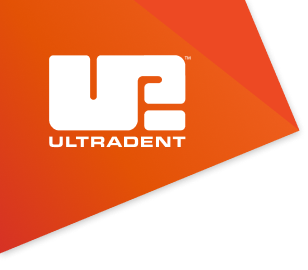Editor’s Note: This is part two of our three-part monthly series on adapting your dental practice for the AI-driven future of search. This series is written by the team at My Social Practice.
In Part 1, we explored how AI is fundamentally reshaping search behavior. Part 2 showed you how AI search engines generate answers instead of traditional link lists. Now comes the critical piece: understanding AI search optimization is one thing, but actually getting AI to cite your practice is something else entirely.
Most dental practices have technically sound websites with proper schema markup and optimized Google Business Profiles, yet they remain invisible when patients ask ChatGPT or Gemini for dentist recommendations. The difference comes down to content trust. When AI platforms need to recommend a dentist for dental implants or emergency care, they cite sources they recognize as credible, clear, and authoritative. If your content doesn't meet these criteria, you won't appear in AI-generated responses, regardless of how well your technical optimization performs.
This guide focuses on creating content that AI systems naturally want to cite. Not through manipulation or shortcuts, but by becoming the authoritative source that deserves to be referenced when patients ask questions about dental care in your area.
What Makes Content Citation-Worthy to AI?
Before we dive into tactics, you need to understand how AI decides what's worth citing. Unlike Google's algorithm, which looks at backlinks and domain authority, AI platforms evaluate content through a different lens entirely.
Think of AI as a really smart research assistant who's been asked to answer a patient's question. That assistant needs sources that are clear, accurate, current, and authoritative.
Clarity beats cleverness every time. AI doesn't care about your witty headline. It wants straightforward information it can parse quickly. "Cosmetic Dentistry Options: Veneers, Bonding, and Teeth Whitening Compared" works. "Smile Makeover Magic" doesn't.
Direct answers to specific questions. When someone asks, "How long do dental implants last?" AI wants to cite content that says, "Dental implants typically last 15–25 years with proper care" right up front, not buried five paragraphs down.
Current, verifiable information. AI platforms identify outdated content. If your service page still references 2019 statistics, AI will cite the practice that keeps their content updated instead.
Proper structure that AI can parse. Clear headers, bullet points for key facts, and logical organization make you infinitely more cite-able.
The Anatomy of Citation-Worthy Content
Start with the Answer, Not the Journey.
Traditional blog writing teaches you to build suspense, provide context, and then deliver the payoff. That structure works great for novels. It's terrible for AI optimization.
Traditional approach: "Many patients wonder about the longevity of their dental work. With advances in materials and techniques, modern dentistry offers solutions that can last for decades. So, how long do dental crowns actually last?"
AI-friendly approach: "Dental crowns typically last 10–15 years, though some crowns can last 25–30 years with excellent oral hygiene and regular dental checkups."
See the difference? The second version gives AI exactly what it needs to cite you immediately.
Structure Content for Chunk-Level Recognition
AI breaks everything into "chunks" of information and analyzes each chunk independently. This means each section of your content needs to stand alone. No "as we discussed earlier" references.
For a comprehensive guide on dental implants, structure it like this:
- What Are Dental Implants? (Complete explanation)
- How Much Do Dental Implants Cost? (Complete ranges and factors)
- How Long Do Dental Implants Last? (Complete answer with details)
- Who Is a Good Candidate for Dental Implants? (Complete criteria)
- What Is the Dental Implant Procedure Like? (Complete step-by-step)
Each section answers a specific question completely. AI can cite any single section without needing the rest of the article for context.
Make Authority Obvious
AI platforms prioritize authoritative sources, but they determine authority differently than Google does.
Include author credentials directly in the content: "Dr. Sarah Johnson, DDS, with 15 years of experience in cosmetic dentistry, explains..." This signals to AI that a qualified professional is providing the information.
Reference professional organizations and standards: "According to the American Dental Association guidelines..." AI loves content that cites other authoritative sources.
Show, don't just tell. Before-and-after case examples and detailed procedural information signal expertise far better than vague claims about being "the best dentist in town."
Answer the Questions Actually Being Asked
Patients aren't Googling "comprehensive oral healthcare solutions." They're asking things like "why does my tooth hurt when I drink cold water" or "can I get braces if I'm 40."
Your content needs to match these real-world queries:
- Patient pain points and fears (What if I can't afford the treatment?)
- Practical logistics (Do you take my insurance? How many appointments?)
- Decision-making questions (Should I get Invisalign or traditional braces?)
- Problem-specific searches (My crown fell off, what do I do?)
Tactical Writing Strategies for AI Citations
The Question-as-Title, Answer-as-Opening Structure is the single most effective format for AI-friendly content.
Title: How Much Does a Root Canal Cost?
Opening: A root canal typically costs between $700–$1,500 for a front tooth and $1,000–$2,000 for a molar, though costs vary based on location, complexity, and whether you have dental insurance.
Then continue with: factors affecting cost, insurance coverage details, payment options, what's included, and how to know if you need one.
Use Descriptive, Semantic Headers
Your headers need to work as standalone questions. AI uses headers to understand content structure.
Instead of:
- Getting Started
- The Next Step
- What You Need to Know
Use:
- What Is the Dental Implant Procedure?
- How Long Does Recovery Take After Dental Implant Surgery?
- Comparing Dental Implant Costs: What Affects the Price?
Create Scannable, Extract-able Content
- Use bullet points for lists of items, symptoms, or steps
- Bold important facts and figures within paragraphs
- Include tables for comparisons
- Add FAQ sections to every major piece of content
AI assistants love FAQ formats because they directly match the question-and-answer structure of user queries.
Establishing Topical Authority in Your Niche
Being citation-worthy isn't just about individual pieces of content. It's about becoming a recognized authority on dental topics in your area.
Create Content Clusters Around Core Topics. Instead of random blog posts, build comprehensive coverage of specific subjects.
For example, a content cluster around dental implants:
- Main pillar page: Complete Guide to Dental Implants
- Supporting: Cost of dental implants
- Supporting: Dental implant procedure step-by-step
- Supporting: Dental implant recovery timeline
- Supporting: Dental implants vs. dentures vs. bridges
Each piece links to related pieces. AI recognizes this pattern and trusts practices that demonstrate deep knowledge of specific topics.
Update Content Regularly
Fresh content is critical for AI citations. AI platforms prioritize recent information because it's more likely to be accurate.
Set a schedule to review and update your top-performing content every 6–12 months. Add new information, update statistics, revise outdated sections, and refresh the publication date.
Include Local Context
For dental practices, local authority matters tremendously. AI assistants are increasingly location-aware.
Naturally incorporate local references:
- "As a dental practice serving [city] for over 15 years..."
- "Patients in [area] often ask about..."
- Reference local landmarks, neighborhoods, and community events
How Social Media Helps AI Find Your Practice
Here's something most dentists don't realize: your social media content isn't just for patients scrolling Instagram. It's increasingly part of how AI platforms learn about and evaluate your practice.
Social media creates "entity signals," references to your practice across multiple platforms that help AI understand who you are, what you do, and whether you're trustworthy. When you consistently post content on Instagram, Facebook, and TikTok, you're creating a trail of information that AI systems use to validate your expertise.
But here's the critical detail: AI is essentially blind to your photos and videos. It can't "see" that beautiful before-and-after smile transformation or your engaging treatment explanation video. AI only reads the text around your visual content.
Why Captions and Descriptions Matter More Than You Think
Every visual post needs a detailed text explanation for AI to understand what it's looking at. Without descriptive captions, your content is invisible to AI, no matter how stunning the visuals are.
What doesn't work: "Amazing results! 😁✨ #dentist #smilemakeover"
What AI can actually use: "This patient came to our practice with severe tooth discoloration from years of coffee consumption. We used professional teeth whitening followed by composite bonding on the front two teeth to repair minor chips. The entire treatment took two appointments over three weeks. Results like these typically last 3–5 years with proper care and touch-ups."
The second caption gives AI-specific information about the procedure, timeline, longevity, and patient concern. That text becomes searchable, cite-able content that helps AI understand your expertise in cosmetic dentistry.
The same principle applies to videos. AI can't watch your 60-second explanation of dental implants, but it can read your video description and on-screen text. Always include detailed captions that explain what's happening in the video and the key takeaways.
What to Post for AI Recognition
Focus on content that reinforces your authority:
Educational content with detailed captions. Short videos or carousel posts explaining procedures give AI concrete examples of your expertise when paired with thorough text descriptions.
Behind-the-scenes content with context. Don't just post a team photo, explain who they are and what they do: "Meet Sarah, our dental hygienist with 12 years of experience specializing in pediatric care."
Community involvement with specifics. Instead of "Great day volunteering!" write "Our team provided free dental screenings to 50 students at Lincoln Elementary School, identifying early cavities in 12 children who received follow-up care."
Patient success stories (with the appropriate written permission) that include treatment details, not just the visual transformation.
The key is consistency over virality. Fifty posts over time that reach local followers with detailed, informative captions do more for your AI discoverability than one viral video with minimal text.
Cross-Platform Presence Matters
AI aggregates information across your digital presence. Having consistent information on your website, Google Business Profile, Instagram, Facebook, and LinkedIn creates a stronger signal than any single platform alone.
Repurpose intelligently. That blog post about dental emergency care? Break it into Instagram carousel slides with detailed captions. Turn it into a Facebook video with a thorough description. Give AI multiple text-based opportunities to discover your content across platforms.
Getting Started with AI-Optimized Content
Anyone telling you there's a quick fix for AI optimization is selling something. Creating citation-worthy content requires ongoing investment in quality, consistency, and relevance.
But you don't have to do everything at once. Start with your most important service pages. Get those updated, structured properly, and citation-ready. Then move to blog content.
And if this sounds overwhelming because you're too busy actually practicing dentistry? That's what working with a specialized dental marketing company is for. Not because you need someone to "manage your social media," but because creating genuinely citation-worthy content takes expertise in both dental knowledge and AI optimization.
The dental practices winning with AI aren't necessarily the ones with the biggest budgets. They're the ones creating content that deserves to be cited. Content that makes AI's job easier. Content that patients actually find helpful.
Be that source. Not through tricks or hacks, but by becoming the practice that AI naturally turns to when patients ask questions about dental care in your area.
Frequently Asked Questions
How do I know if AI is citing my dental practice?
The most direct way is to test it yourself. Ask ChatGPT, Perplexity, Claude, and Google's AI mode questions about dental services in your area and see if your practice appears. If you don't show up, you now know exactly what information is missing and what type of content to create next. Most importantly, ask new patients during intake how they found your practice. You might be surprised how many mention using AI assistants.
Does being cited by AI replace traditional SEO?
No, AI citations and traditional SEO work together, not against each other. Google is still the dominant search platform, and traditional SEO still drives significant patient acquisition. However, AI-optimized content typically performs better in traditional search too because the principles overlap: clear, authoritative, up-to-date content that answers specific questions. Think of AI optimization as an evolution of SEO, not a replacement.
How often should I update content to stay citation-worthy?
Review and update your most important service pages every 6–12 months at minimum. For blog content, aim to refresh the top 20% of your posts twice yearly. Add new statistics, update treatment information, revise outdated sections, and refresh images. The publication or update date matters to AI platforms, which prioritize recent content. A comprehensive update is better than minor tweaks.
Can I optimize old content for AI citations or do I need to start over?
You absolutely can optimize existing content. In fact, updating high-performing content is often more effective than creating new content from scratch. Restructure existing posts using the question-as-title format, add direct answers at the beginning, break up text walls with better headers and bullet points, include schema markup, update outdated information, and add FAQ sections. Many practices see significant improvements simply by reorganizing existing content.
What content types does AI cite most frequently for dental practices?
AI platforms most frequently cite content that directly answers specific questions: service pages that clearly explain procedures, costs, and what to expect; FAQ sections that address common patient concerns; comparison content that helps patients choose between treatment options; and practical information about logistics, insurance, and recovery timelines. AI rarely cites promotional content or vague pages. Focus on informative, question-answering content over marketing copy.








